How To Start AI Business in 2023 [Using OpenAI API]
If you want to start AI business, now is the time. OpenAI made the world’s most powerful AI and they actually made it available for anyone in the world to use however they please.
Recently, we went through best Chat GPT business ideas you could start using OpenAI.
Today, I’ll break down everything that you need to start your first AI business from start to finish.
We’ll dive into how to choose the right AI business model to start, how to make a good product, and then finally, how to market and sell that product.
I will show you each piece of the puzzle to make it as digestible as possible.
- , AI

Creating a successful AI business with OpenAI’s API
OpenAI spent over 7 years and billions of dollars developing various powerful GPT models, which means they literally made the product for you.
And thanks to the API, you can essentially just repackage their AI and use their product to solve problems in the industry that you’re an expert in.
And that is exactly what we’ll be going over today. How to start an AI startup with OpenAI’s API.
Although ChatGPT has its place in business, in this guide, we are not using ChatGPT; we are using GPT-3’s API, which is made by OpenAI, but it is a small detail that’s important to note.
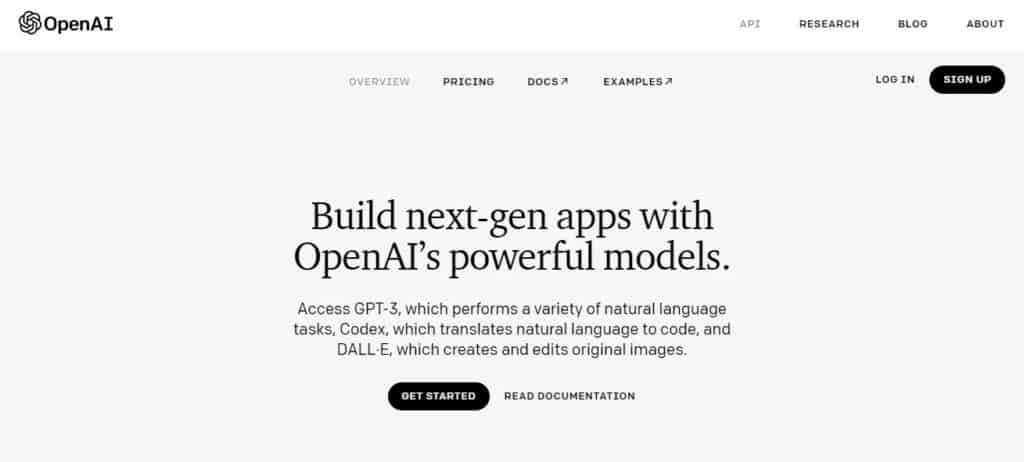
As I explained in my AI entrepreneurship guide, the GPT-3 API will allow us to use their language model in our own applications.
This allows us to create our own AI system that can learn from what we feed it.
Choosing the Right AI Business
How do we decide what AI business to choose? To start, if you have never run a copywriting business, it probably isn’t the best choice to create an AI copywriting software.
There are two reasons for this. Firstly, you need to know what good copy is in order to distinguish if AI is writing good copy or not.
Secondly, you don’t know the ins and outs of the industry and most likely don’t know the language to actually sell people on your service. More on this later.
The Importance of Network, Skills, and Industry Knowledge
It is very important that you choose a business where you have a unique advantage that other people cannot replicate. By advantages, I mean 3 things:
- Network
- Skills
- Knowledge
Now let’s break down each of them.
Network
Network could people you know that have for example, a big following or access to an industry that you can learn from.
Think of somebody in your life that can give you some sort of head start or advantage.
Skills
Next, consider your skills. What are you better at than other people? If you don’t have high income skills, that’s where you need to focus. You’re not ready to start a business if you’re not good at at least one thing.
It’s going to be either really expensive to hire all the people with the right skills or it’s going to be really hard for you to find a problem to solve.
Knowledge
Consider what knowledge you have in specific industries. Do you know the ins and outs of any industry where you can identify a niche inefficiency that AI can improve upon?
You’re not making an AI model, OpenAI did that for us with GPT-3, but you’re using the existing AI to solve problems in industries that you are an expert in.
You want to be the AI guy for that industry, because the product is the same for everybody. We’re all using OpenAI’s API, but how we choose to use that API is our unique angle.
Ultimately, your goal is to identify a problem and then create a solution for that problem and then offer that solution to other people with said problem. It’s really simple. So ask yourself:
- What are your advantages?
- Do you have a network?
- Do you have a skill?
- Do you have knowledge about a specific industry where you can identify a niche inefficiency?
OpenAI Business Models
There are three AI business models you can start and these are:
- Website-based application
- Mobile app
- Chrome extension
The choice all depends on the problem that you’re choosing to solve, and you should choose the most convenient option for your target demographic.
Each business model has its own unique pros and cons, so let’s go through them.
Let’s start with web apps.
Website-Based Applications
Web apps are simply AI tools that you can deliver and can be used directly on your website.
Web apps are designed for people on desktops or laptop computers but can also be used on a mobile browser.
Some examples (that I’ll cover later in depth) of web apps are Tome.ai; the presentation builder, Tweet hunter; Twitter automation tool, and Site Kick, which helps you build landing pages.
These are great because they’re the easiest to make and you don’t have to get your app actually approved on an app platform. Also, you keep 100% of the profits, which is great.
You simply put up your website and offer your service for a price.
The downside is you will likely get no organic traffic so you’re going to have to rely on influencer marketing, SEO, or paid ads to get that initial word of mouth.
I will go over different traffic sources and strategies later in this guide but for now, let’s focus on the different platforms.
Mobile Apps
So web apps contrast exactly with app stores. If you decide to go the mobile app route like Lensa did with their magic avatars, you will benefit from the fact that it could be recommended on the App Store.

People are going to naturally search for AI apps like yours, and that could show up in their search, which leads to organic traffic.
And on top of it, mobile is very convenient for the consumer, which means you can charge slightly more in some cases.
But the downside of mobile apps is you have to be an approved developer. You have to submit your app for approval, and then once you do get approved, Google and Apple going to take 30% of every single sale according to TheVerge.
So if you have an app on the App Store and you sell a service for $10, Apple and Google is going to get $3 right off the gate and you’re left with $7.
So in my opinion, I recommend you to start with a web app just so you can prove the concept and see if people actually want your product. And if that’s proven, then you invest in the actual mobile app.
Another thing to think about is apps are slightly more expensive to develop and there is a little bit of a higher barrier to entry since you have to be an approved developer.
But if it’s harder to start, that means there’s going to be less competition and you can get on any app store, whether it’s the Apple Mobile App Store or an App Store like Shopify for people building their e-commerce brands, or WordPress, for your everyday consumer that wants to make a website for their own personal brand.
These are different app stores where you can create specific AI tools to solve their specific problems.
Chrome Extensions
And what I find myself using the most as a consumer is Chrome extensions. Chrome extensions are less competitive than your typical web app.
A great example of an AI Chrome extension that I’ve been using a lot is Merlin. It’s great because it’s so quick and easy and I can use it on any website.

Chrome extensions are probably the most convenient for the consumer. They’re low lift, meaning they do not have to be entire platforms. And just one specific use case is all that it needs to be something that makes someone’s life slightly more convenient. And from a development standpoint, it’s relatively quick to make. So the choice is yours.
Web app, mobile app, or Chrome extension. Those are the pros. Those are the cons. Now it’s up to you to decide.
Again, this is all depending on where your target demographic lives online, which is why it’s very important to define the problem that you’re solving and where those people actually live online. And then moving on to what I think is kind of the best middle ground.
Okay, so far you should have defined the problem that you’re solving, the product that you’re making, where those people that have that problem live online, and the medium in which you’re going to deliver that product.
Now how do we actually get the product made?
Finding a Developer
To start and OpenAI business, you’re most likely going to be looking for what is a full-stack developer, meaning someone who can work on your front end and your back end.
The front end is essentially like the functionality of the website that you actually see, making sure all the buttons work and connecting things to the back end.
And the back end is essentially like connecting the open AI API servers and all this technical nonsense that I don’t understand, but that’s what you’re looking for.
Finding developers is usually the scariest aspect of starting an AI business.
- How do I find a good developer and a good developer that I can actually trust?
- How do I even explain my idea?
- What questions do I ask to make sure this person is qualified?
- And how do I know if I’m getting a good price?
It’s not hard at all. Let’s break down each question.
That way you’re confident you know exactly what you need to do to hire your first developer. First, where do you even find a developer?
Upwork
One of the go-to platforms to find an AI developer is Upwork, which is essentially like a job posting board where freelancers can look for jobs that they’re qualified for and then submit to get hired for that job.

You can just simply post the job description, and the skill set that you needed, and then people respond to your request. Then you can hop on an interview.
But what you need to be careful of is a lot of these people may act like they are more skilled than they say they are just so they can get the job, but then they won’t be able to do a good job, and then some people are just straight up scams.
So it’s really important to do your due diligence. It’s important that you interview multiple developers and you don’t just go with the first person that’s promising you the world. You really need to test and make sure they actually know what they’re talking about.
Make sure they’re showing you previous work they’ve done and they can explain to you the actual capacity that they were working on that project.
Discord communities
There are a lot of Discord communities that are centered around helping people learn AI development.
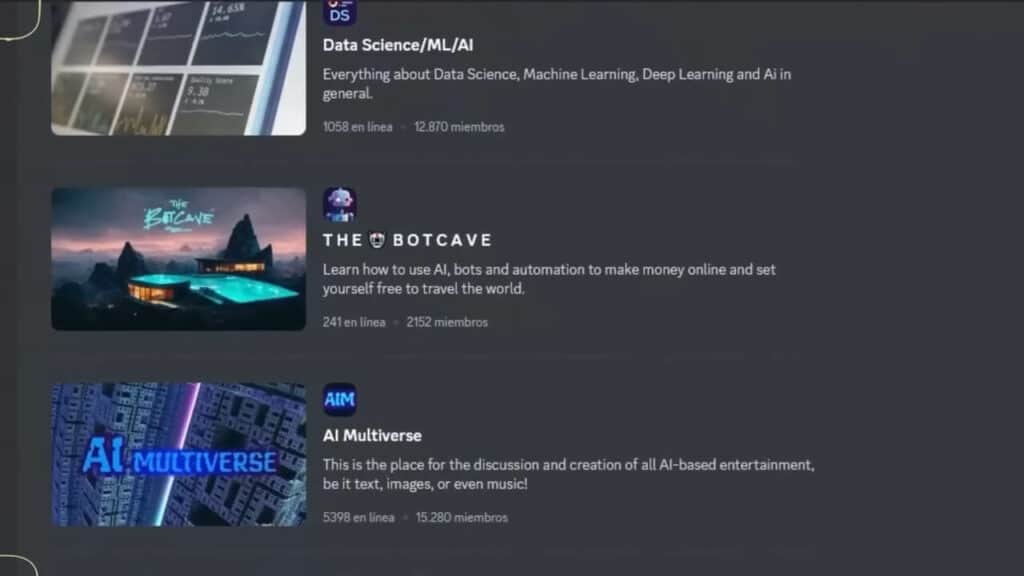
You just go to one of these communities and post the job that you’re looking to get done.
Finding a UI and UX Designer
On top of that, you’re going to need a UI and a UX designer which you can also find on Upwork.
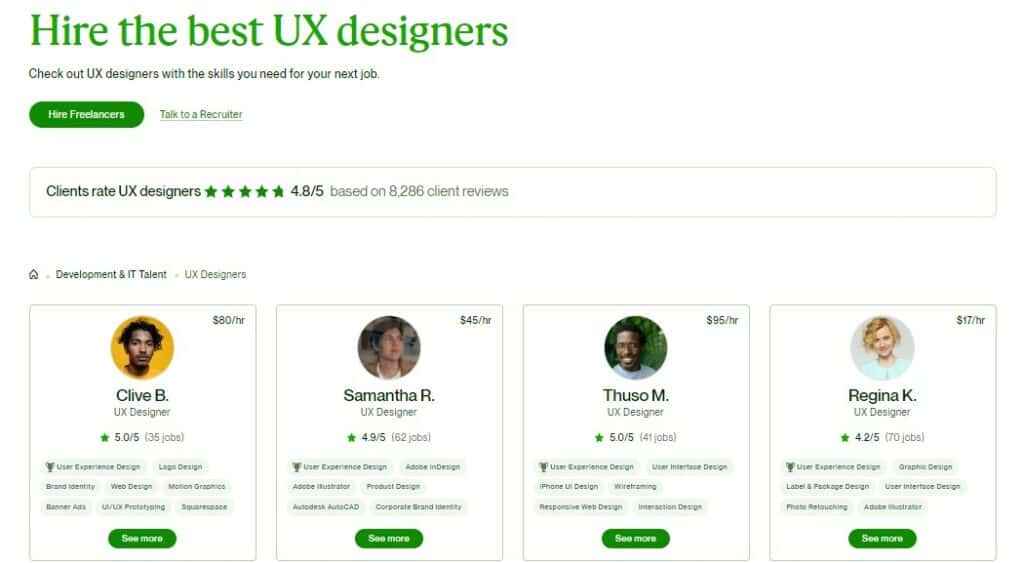
UI/UX designer is someone to design the actual layout of the website.
And this is actually very, very important because we are entering a value through design, a value through UI phase where that’s what really is standing out.
The design of your website and how easy it is for your consumer to actually use your product is going to make or break your business.
Hiring process: Interviewing multiple developers and testing their qualifications
I recommend you interview multiple people and be as specific as possible when you’re talking to them about what you’re looking for.
Don’t just be broad and say, “Hey, I need a website. Can you figure it out?”
Be very, very clear about the functionality and where you want things to be laid out.
There’s no right answer or right or wrong place, just make sure you’re interviewing multiple and asking the right questions. Other places to find developers are your local college or LinkedIn.
Pro Tip: if you know anybody that knows how to code in any capacity, I recommend asking them for advice or having them help you interview people just so you don’t get taken advantage of.
So you found 10 developers and set up 10 different interviews. How do you present your idea to these developers and what questions do you ask them? For me, I just make a simple Google Doc.
Just explaining the idea at a high level, explaining that I want the product to be a website, a mobile app, or a Chrome extension, and I’m going to make bullet points of all of my desired features.
Here is an AI job description template you can use.
📝 AI Developer Job Description
Step 1:
Present them with a problem/project:
Have a general project in mind that you want them to develop and present them with it. Try to intentionally not go into some details.
Step 2:
See if they have any questions:
It’s straightforward. If they don’t, they lose their job. A developer that doesn’t have further questions on a loosely presented idea, is just not giving it enough care to think.
Step 3:
Ask them how they would go about developing it:
If they start to use technical terms, you should ask them to simplify them for you.
Most likely, they won’t be able to handle it all by themselves. Pay attention to what their expertise is.
At the end of this step, If you came out understanding what they will do, they go to the next step.
Step 4:
Ask them about relevant past projects and them analyzing it:
If they don’t have relevant projects in the past they at least should be able to give you details on potential issues that might come up.
You’re basically trying to see if this person has the proper skill set, is trustworthy, and someone you see yourself working with long term.
This is someone that can make or break your business. So do not take this decision lightly. You could be working for years to come if this business takes off.
Payment Structures
Okay, so you interviewed these developers, you ask them the right questions and you found someone with that you’re confident. Now how much do you decide to pay them?
Very broad number here, but if you’re making a simple tool, I would expect to invest anywhere from $2,000. But understand Silicon Valley developers who are the best in the world charge $500,000 a year. So it’s always going to depend on how complex your idea is in the experience of the developer themselves. But because of that, it’s hard for me to give a blank statement. There are also three different payment structures that you should consider.
Flat & hourly rate
If you are confident in your idea, you have advantages and you know how to sell. The best way to go is to just contract the developer at a flat rate and get the tool built.
I would recommend paying in milestone loans. For example, you get a quote on the front end, you pay 50% up front and then you pay 50% once it’s done. And then you do this for every single milestone.
Or you can do hourly where they send you a daily report on the task they completed, but just make sure they’re screen recording their work so you can track it yourself or ask if they can push their progress in GitHub so you can see the live updates.
Revenue Share
Now maybe you have a little bit less money to invest upfront, but you’re really confident in the idea and you and the developer you interviewed really get along.
In this case, you could actually save money upfront by offering the developer a smaller upfront payment, but then actually giving them a revenue share on the back end, forming an official partnership.
This way you’re taking less risk up front and you’re aligning the incentives of the developer to make a good product more efficiently. Because at the end of the day, if you don’t make a product, he doesn’t make money on the back end.
This is what I would recommend for a lot of you to do and what I do quite often.
Equity Split
Now, if you have a developer that you know really well, you trust him and you know he makes great work, is do an equity split, meaning you give him ownership in the company. This is what I’ve done with my business partner and is the best long-term strategy because you can’t build something great alone. And if you have someone that has opposing skills, is equally committed and motivated, you can accomplish much more, much more quickly. At the end of the day, any business you need two people, someone who can make it and someone who can sell it.
Think Steve Jobs and Steve Wozniak’s alone, neither one of them could create Apple, but together they created the most valuable company in the world. So those are the different ways you can actually pay your developer.
Creating a Minimal Viable Product (MVP)
You need to understand that some of your desired features may not be practical right away and you kind of want the mindset to make what is called a minimal viable product or an MVP. Meaning you just want to make a functional tool that proves that you can solve the problem efficiently.
Testing your MVP with a Small Group or Online Community
Once you have an MVP that solves that core problem, you can then offer this to a small group of friends or an online community to see if people will actually use your product. Reddit is a very popular place for the AI community.
Another great platform is Product Hunt if you want to see newly released tools or even get your tool featured to see if people are interested.
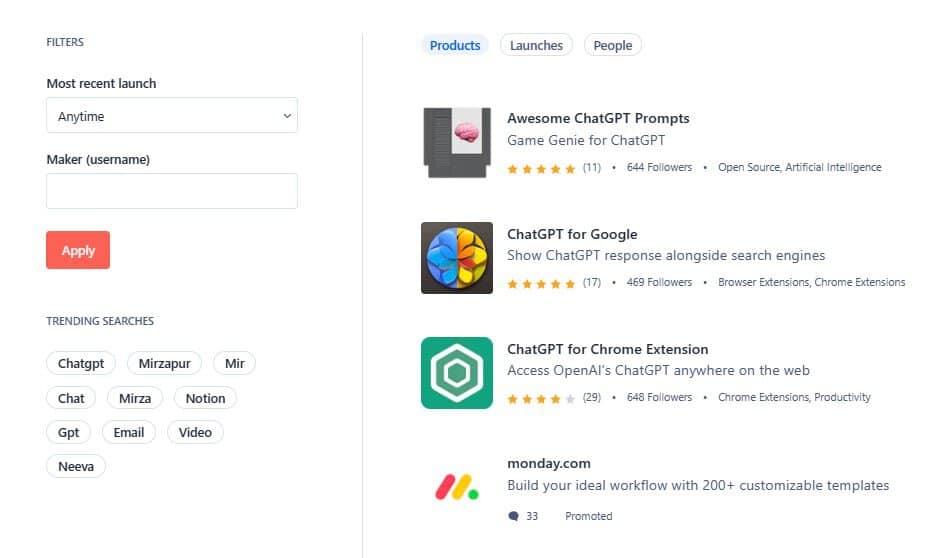
So if people do like the MVP of your AI SaaS business, Chrome Extension, or whatever you build, you can then focus on improving the tool and adding new features down the line.
At this stage, you can also take advantage of some of the AI tools for startups to help you get your AI business off the ground.
Importance of Proper Project Management
Now, assuming that you’ve settled on that, the last aspect of executing an idea is proper project management.
This ensures that everyone on your team knows exactly what they’re responsible for and that you’re able to track that everything is getting done on time. For us, we use monday.com for all of our internal docs and task management.
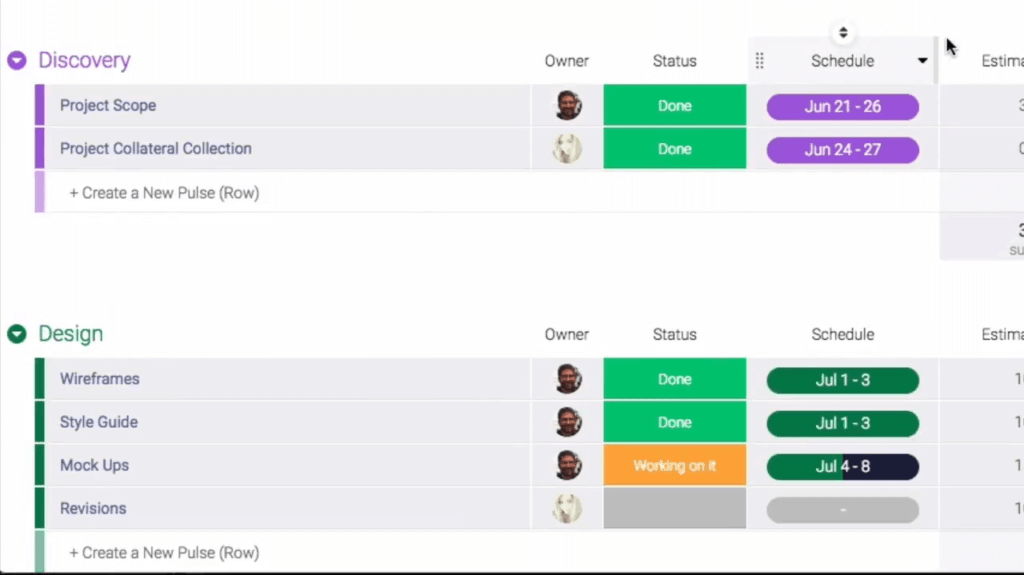
Monday is very powerful. If you actually take the time to learn it, you’re starting your first business. This is something that most people look past but is crucial to ensure you’re not overpaying or wasting time.
So get your team set up and you’ll have seamless communication across the board. This will just make sure everyone is getting their responsibilities done in a timely manner.
Creating a good AI software: the foundation for success
The most important thing to consider is how to make a good product? And understand that is foundational. You have to have the mindset of how to make the best product out there. Because word of mouth is the most powerful marketing method. If want proof of that, look at Lensa AI.
It either works for you or works against you. And if you put out a half-baked product to the market, people are going to talk about that and your business will never grow.
So if you put the work in upfront to make a great product, it is going to be way easier in the long run because word of mouth will spread, and that will actually create organic growth for your product.
So it is better to have the mindset of, how do I make the best product possible. Instead of what is the fastest product I can make.
Open AI Business Startup Examples
If you need inspiration, let’s go over some of the AI business examples that are killing it.
Lensa
Lensa is an AI app that has gone viral lately because they found a very specific use case for one of the OpenAI APIs. You may have seen it on Instagram, as many people are posting animated versions of their faces.

And the interesting thing about it is that it was using the Stable Diffusion AI engine, which is essentially free for anyone to use. Yet, Linza was charging $10 for these anime photos of people.
The way it works is that people would download the Lensa on the app store, upload 10 photos of themselves, pay $10, and then get 100 animated photos of themselves in different styles.
Namelix

Namelix is an AI tool that helps you come up with names for your business.
You just put in some keywords and describe your business, and then it gives you hundreds of creative options.
And the best part? It’s completely free.
But here’s the clever part, each name comes with custom branding options. And if you like the design, fonts, colors, and logos, you can choose to pay $65 for the source files of all the branding assets. Genius, right?
Twitter Hunt
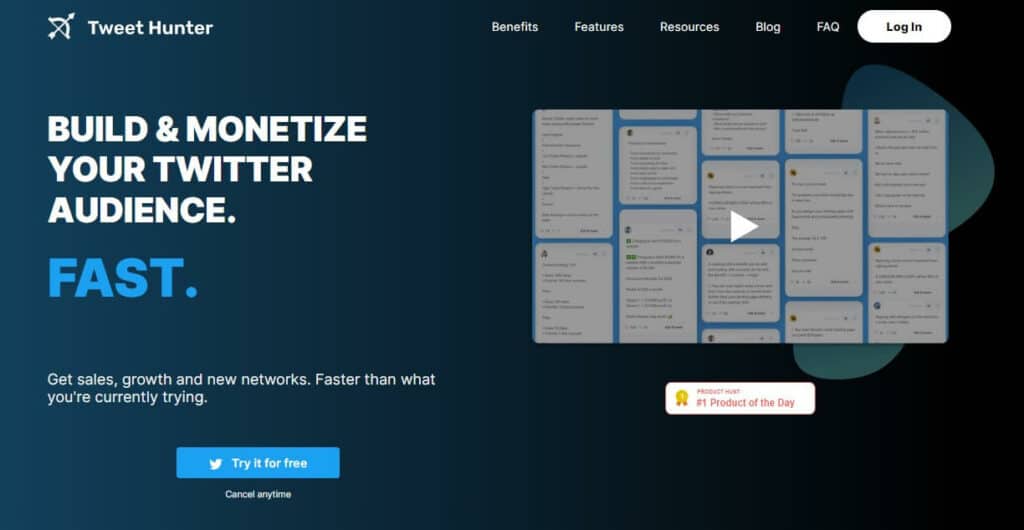
TweetHunter is a Twitter automation tool that lets you connect your Twitter account and it scrapes all your tweets to gauge your tone and subject matter.
Then, it uses AI to generate dozens of tweets that fit your style. The first few tweets are free, but if you want more, they start charging you. It’s a great freemium AI business model.
By the way, Twitter Hunt just announced they sold their AI business for $2 million. And what’s remarkable about this is the business is only 15 months old.
Sitekick.ai
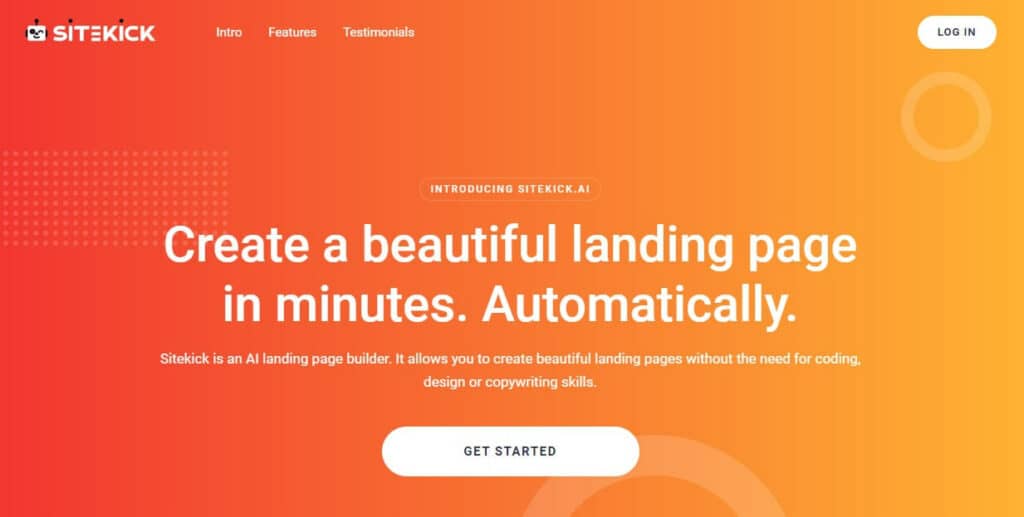
SiteKick.ai is an eCommerce AI tool that lets you make any landing page in just a minute. If you’re a drop shipper, you know the game is trying out different products and making landing pages to see if people are interested. SiteKick makes it super easy, just type in the subject and add a few images and you can make a really nice landing page, super fast. Usually, it takes hours or even a day to make a landing page, but with Sitekick you can do it in 60 seconds. If you can save people time, you’re creating value and making money using this AI.
AI Business Idea Checklist
Now, I would like for you to come up with a business idea and address the following questions:
1. What are your unique strengths in this market?
2. What problem does your target demographic have that your business can solve?
3. Who are the existing players in this market?
4. Which competitor’s business model do you want to learn from?
5. How will your business stand out from the competition?
6. What is your proposed pricing strategy?
Starting an OpenAI Business Final Words
So there you have it, my friend. Everything you need to do to execute your AI business idea and to go from an idea to an actual product.
Let’s be honest, 95% of people reading this are never going to take action.
So understand that if you are in that 5% that’s actually serious about becoming an AI entrepreneur, this is not going to be fast or easy, but the reward, if done properly, will be massive.
Patryk Miszczak

